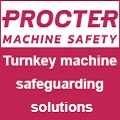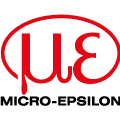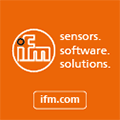
Posted to News on 24th Oct 2006, 09:42
PLC Market to Hit $10 Billion Mark
Manufacturing companies continue to increase investments in capital expenditures for automation equipment as they clearly recognize the role of automation and its contribution to the profitability and success in the fierce global market. As a result, the demand for the Programmable Logic Controller (PLC), a key automation component in the discrete, hybrid, and process industries, will grow robustly. The worldwide market for PLCs is expected to grow at a compounded annual growth rate (CAGR) of 6.1% over the next five years. The PLC market was nearly $7.5 billion in 2005 and is forecasted to grow to over $10 billion in 2010, according to a new ARC Advisory Group study.

PLC Market Remains Vibrant
Manufacturers will continually face challenges to raise productivity, lower product costs, reduce plant operating costs, and increase return on investment (ROI) in order to compete in the global market, driving PLC market growth. Applications for PLCs are also driven by crucial factors such as energy savings, condition monitoring, safety, collaborative manufacturing, and real-time optimization strategies that are key to an end user's competitive strength and growth.
PLC products are continually improving in the areas of functionality, communication capability, size, scalability, software, implementation tools, and diagnostics to help meet rising manufacturer's challenges to remain competitive, profitable, flexible, and agile in this global market. One of the most important trends is the increasing integration of the multi-control discipline functionality such as HMIs, motion control, and PLCs. Users are focusing more on integrated system solutions to reduce total cost of ownership and no longer accept discontinuities between systems.
The report also elaborates on the impact of PLC growth due to the manufacturer's drive to satisfy regulatory requirements, several fast growing infrastructure industries, and an expanding role of PLCs beyond discrete manufacturing, which is their traditional market.
Expanding Role of PLC
Observance of open standards, emerging hardware with open control, modular architecture that mirrors applications, and the increasing role of software in automation solutions leads to an expanding role for the 'Open PLC', especially in high-end PLC applications. This concept is defined by ARC as Programmable Automation Controllers, or PACs. The PAC concept will not replace or supersede the traditional PLC, but it will expand the PLC's role and play a major part in plant and factory automation today and in the future.
In addition to the quantitative assessment of the PLC market, this report provides an insightful analysis of the products and strategies of leading PLC suppliers and explores issues that will impact this business in the future.
Want the latest machine building news straight to your inbox? Become a MachineBuilding member for free today >>

















